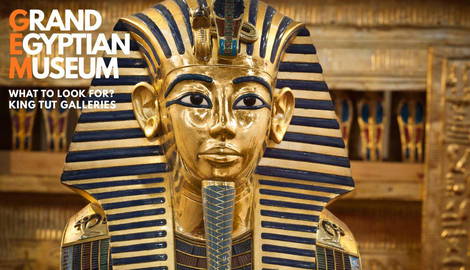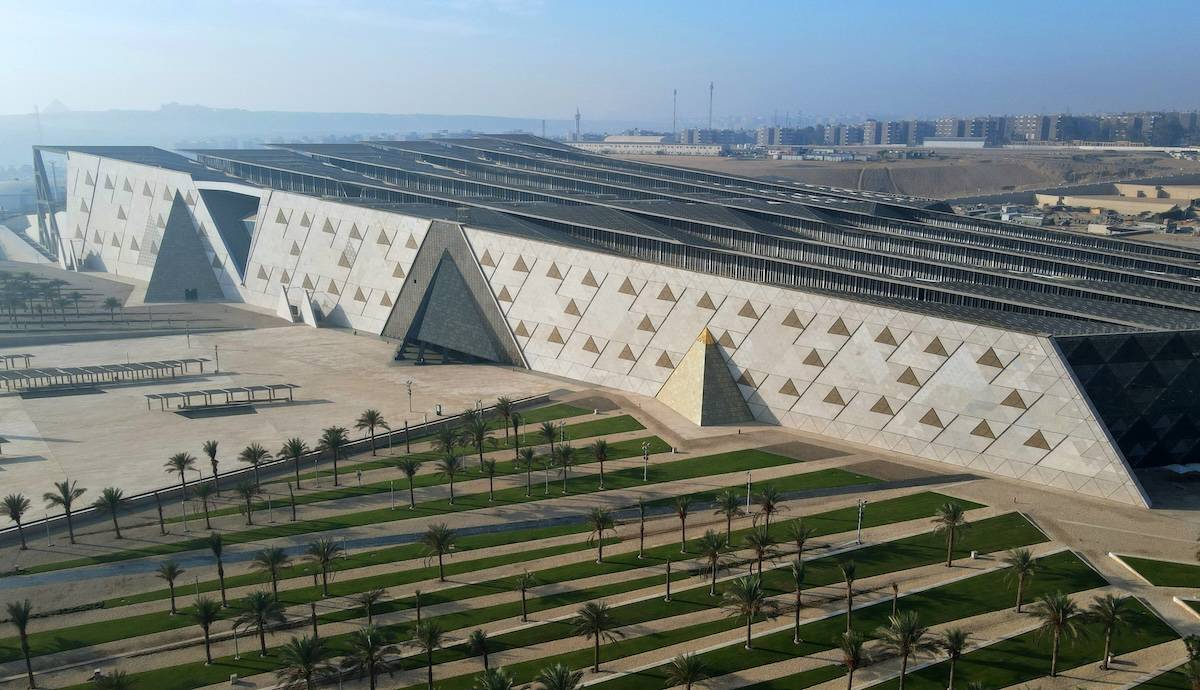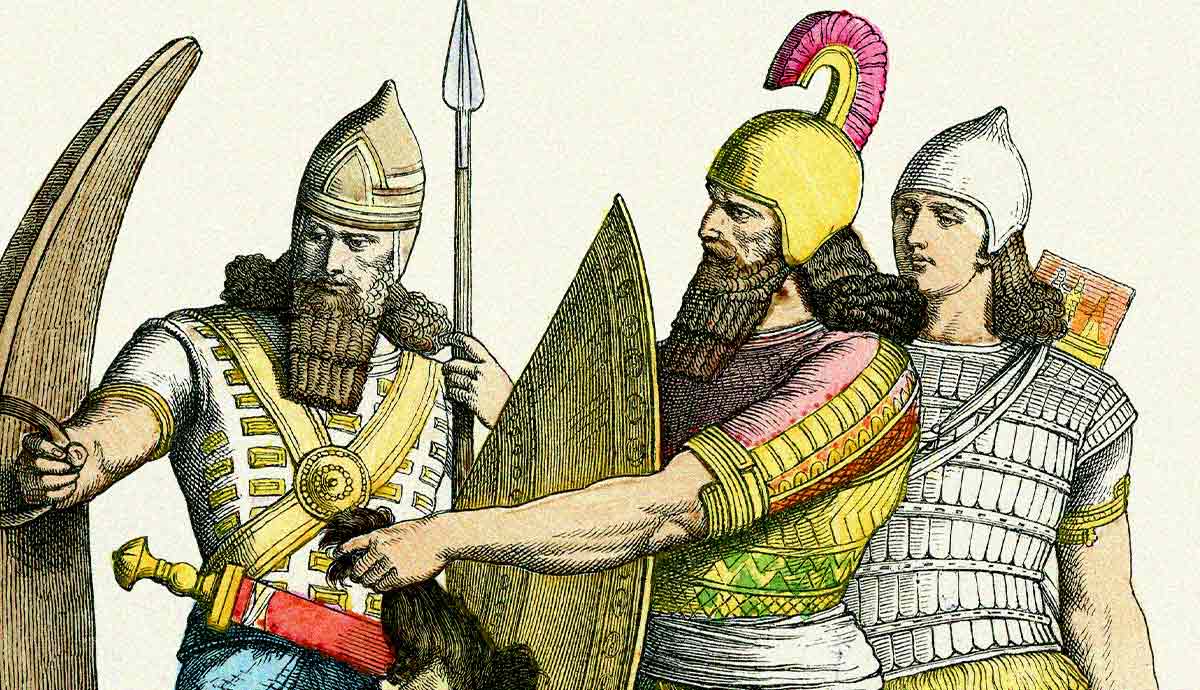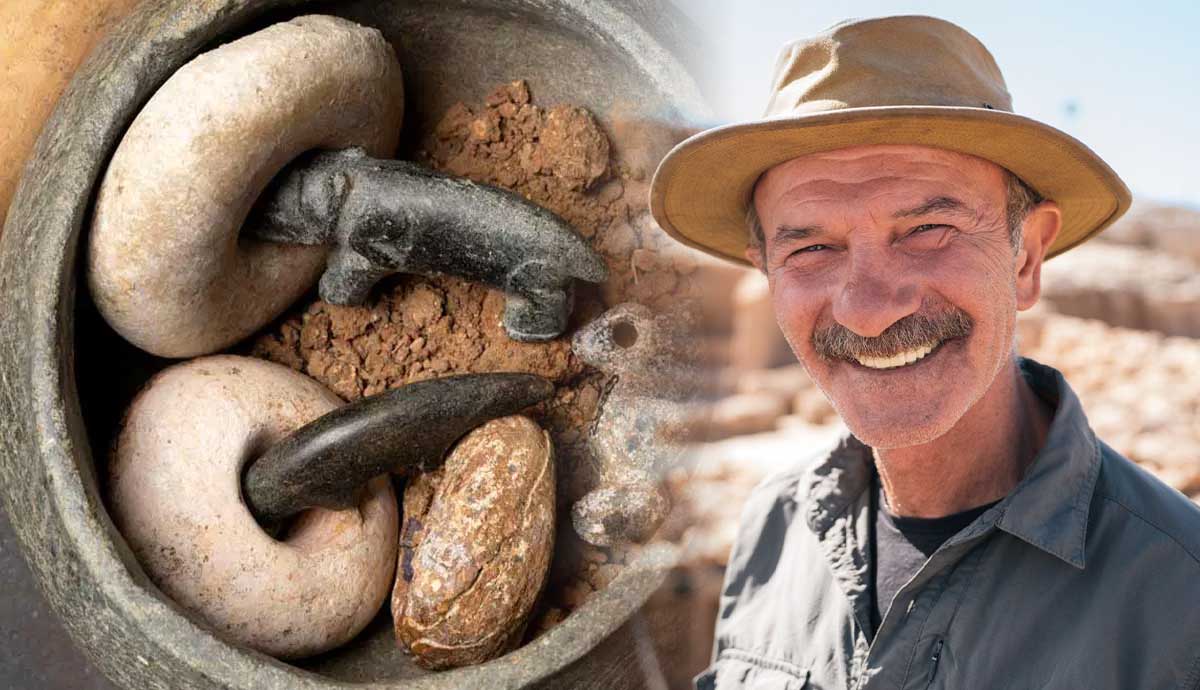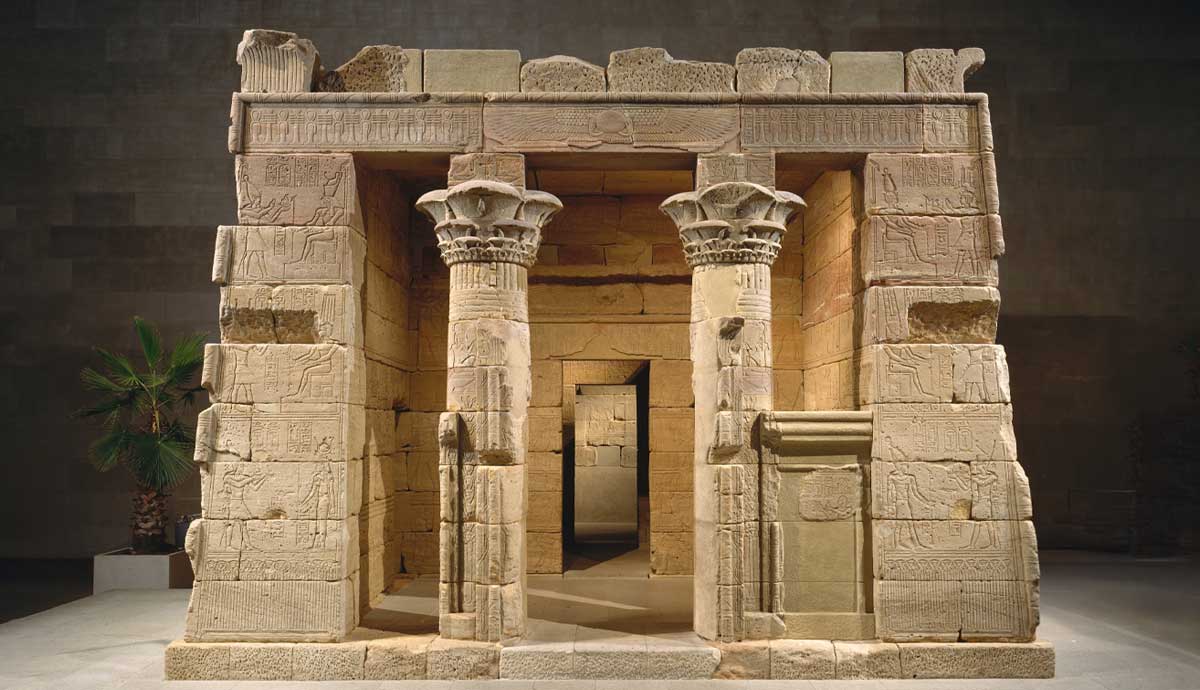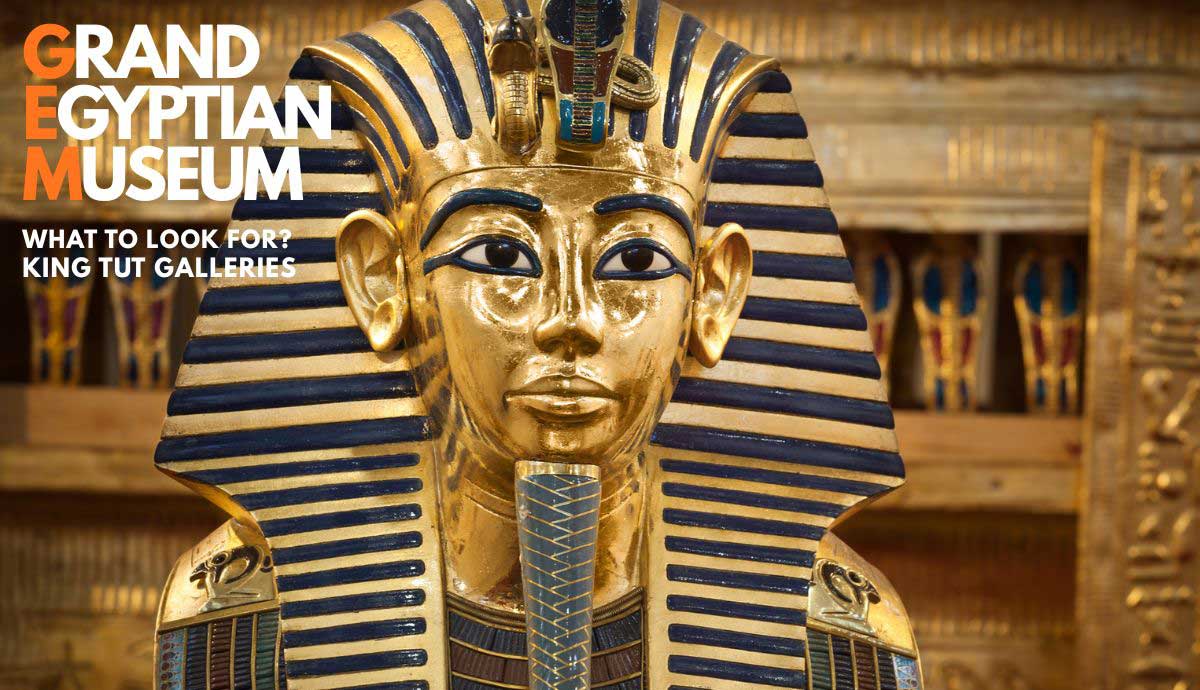
As of November 2025, the Grand Egyptian Museum is fully open to the public. The long-awaited institution exhibits over 50,000 objects, tracing Egypt’s history from its Predynastic beginnings to the Coptic period.
Now, for the first time since 1922, the GEM’s King Tut galleries reunite all 5,398 objects excavated from the famed pharaoh’s burial across two extraordinary exhibition halls.
The Complete Assemblage in the GEM’s King Tut Galleries
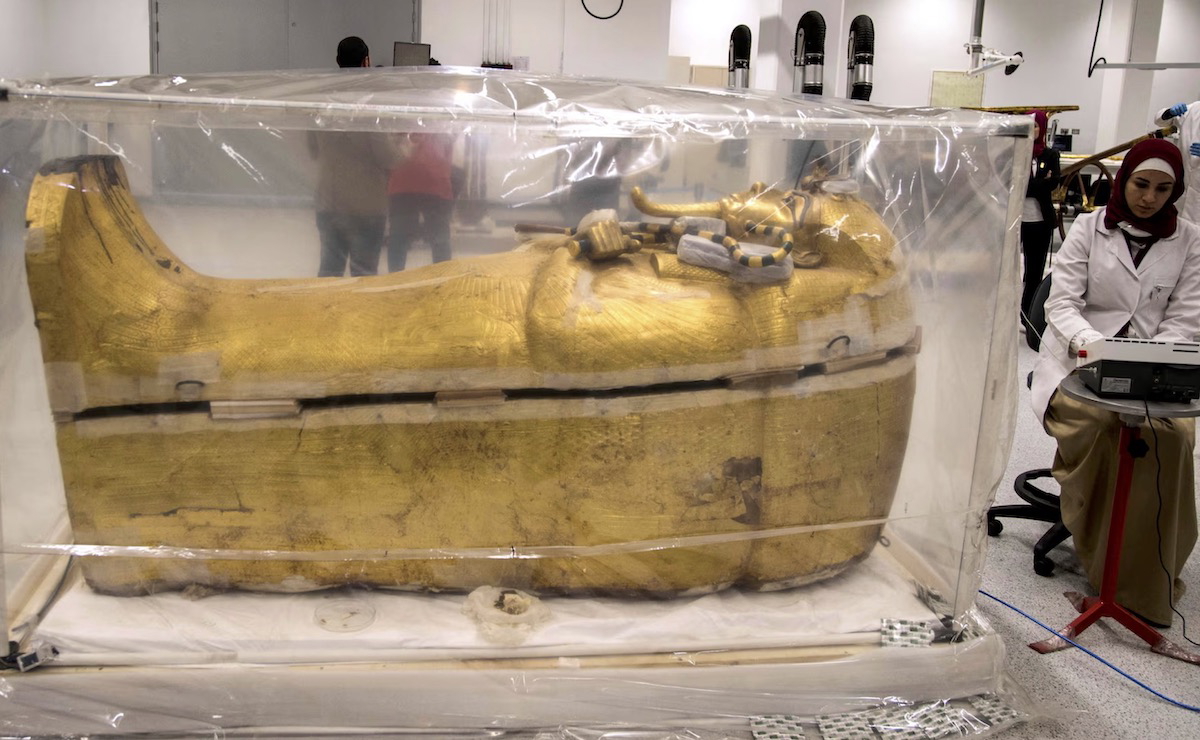
The Grand Egyptian Museum‘s King Tut galleries reunite every zone of the KV62 archaeological site, including the antechamber, annex, burial chamber, and treasury. This allows the assemblage to be exhibited as a single, cohesive record for the first time in its history.
Everyday objects appear alongside ceremonial objects, inviting comparison within context. For example, Tutankhamun‘s clothing—sized for a teenager—is displayed alongside monumental shrines, sharpening the contrast between his boyhood and his pharaonic legacy.
Look for:
- The entire King Tut collection (5,398 objects), presented across two exhibition halls
- Four nested gilded shrines that enclosed the sarcophagus
- Three coffins of Tutankhamun, including the solid gold inner coffin
- Canopic shrine with four goddesses guarding the calcite canopic chest
- Funerary beds of Tutankhamun in animal forms (lion, cow, hippopotamus)
- Hundreds of shabti figures as royal servants for the afterlife
Daily Life and Craft in the GEM’s King Tut Galleries
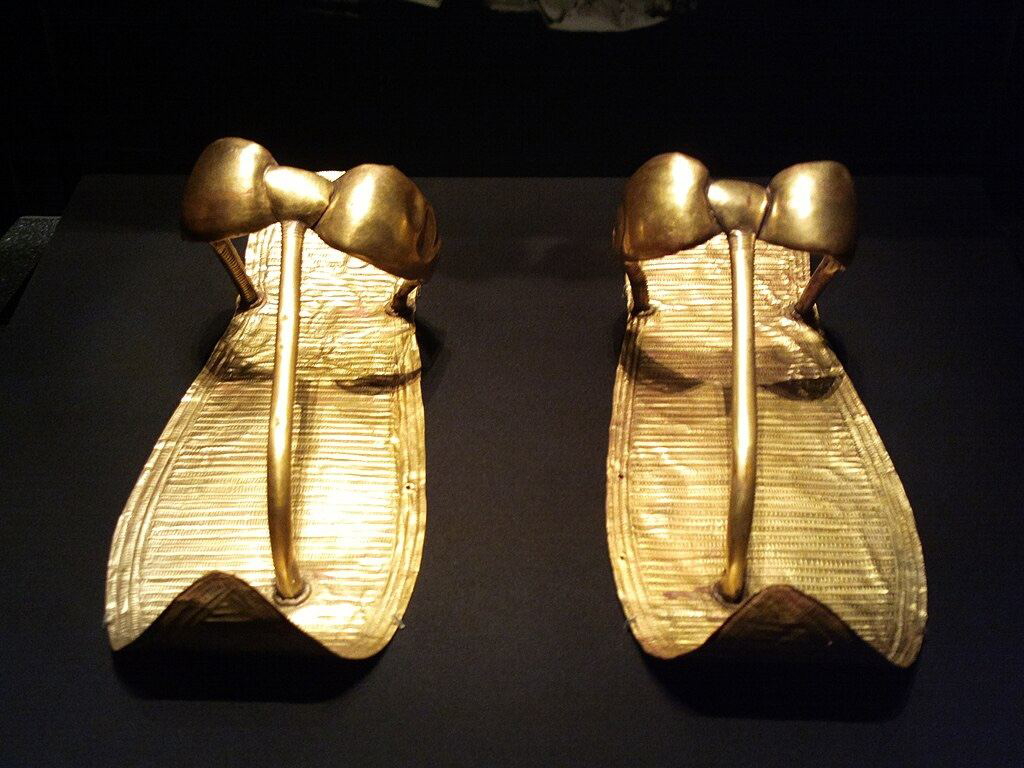
The most ordinary objects can often tell the most interesting stories about the people who used them. Linen garments worn by King Tut exhibit stitch patterns optimized for climate and movement. Sandals preserve wear and ancient repairs that attest to their use. Cosmetic and writing kits record daily routine. And, visible joinery in stools and chairs—mortise and tenon, pegs, veneers, inlay—bears evidence of workshop training and imported timber supply in New Kingdom Egypt.
Look for:
- Tutankhamun’s sandals and gold toe stalls with visible wear
- Folding stool and inlaid chair showing mortise-and-tenon joinery
- Cosmetics of Tutankhamun, including kohl pots and unguent jars with residue
- Writing kit of Tutankhamun, featuring a pen case and palette
- Game boards, such as Senet and Mehen, from the royal household
- Headrests and travel chests that map routine and movement
Royal Ideology and Courtly Life
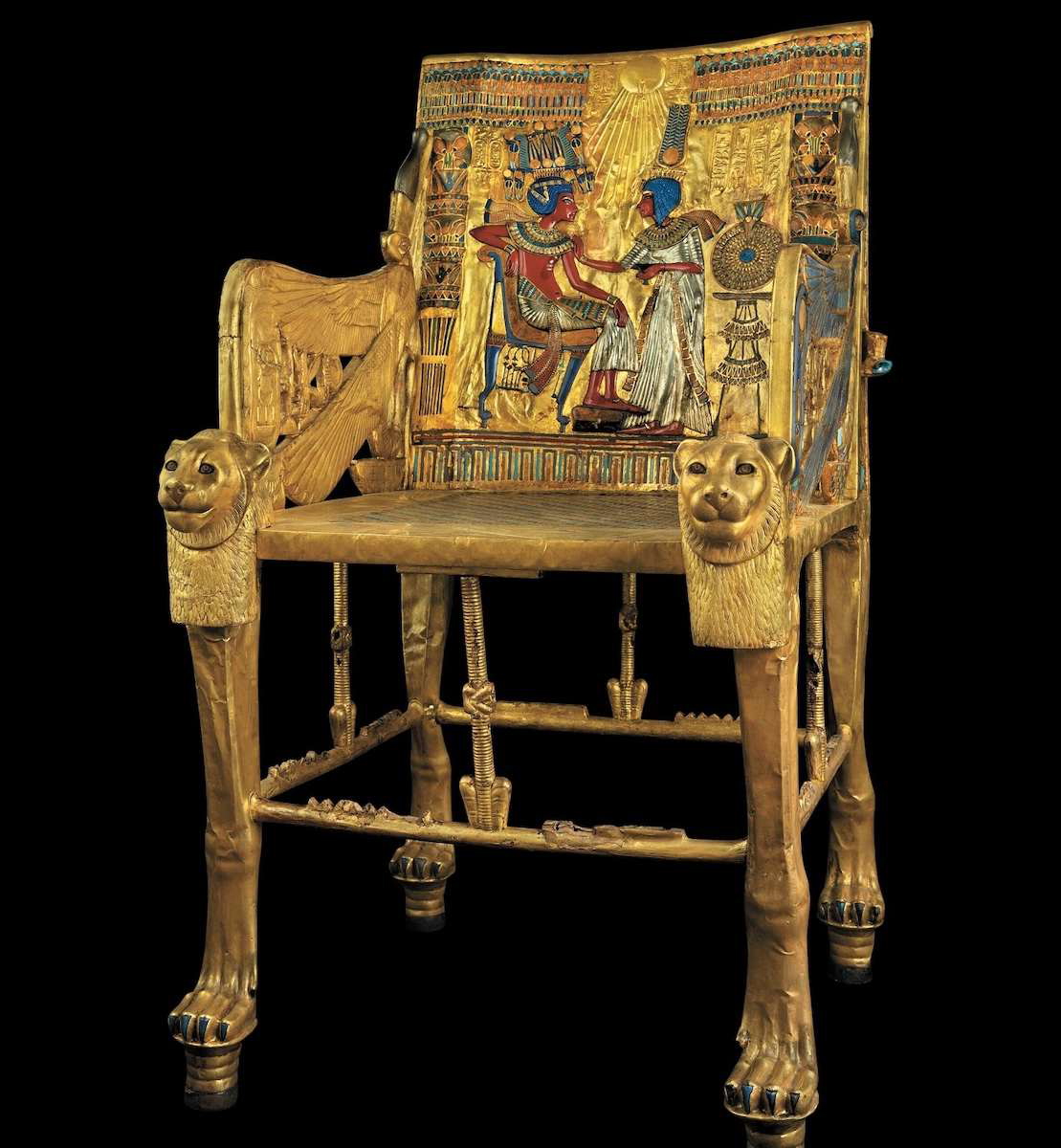
In King Tut’s burial chamber, four gilded shrines and three coffins were arranged in a nested formation. This was to preserve the mummy and to secure the boy king’s passage into the afterlife. Inside the shrines sat the stone sarcophagus, containing three coffins, which ended with a solid gold inner coffin and a mask. The canopic shrine with its four goddess guardians protected the mummy’s organs.
Ancient Egyptian customs are evident in the construction and decoration of the burial chamber, both of which are touched upon in the GEM’s King Tut galleries. Sun disks, wings, and cobras symbolize protection and renewal. Hinges, corner joints, gilding overlaps, and tool marks track how the enclosure was carefully designed and built.
Look for:
- Gold mask of Tutankhamun in the ritual sequence
- Tutankhamun’s gilded throne with Ankhesenamun anointing the king
- Coffins and sarcophagi as a stepwise program of protection and renewal
- Canopic jars of Tutankhamun within the canopic shrine
- Pectorals and collars with solar and protective motifs
- Funerary papyri and amulets that encode royal transformation
Mobility and Power
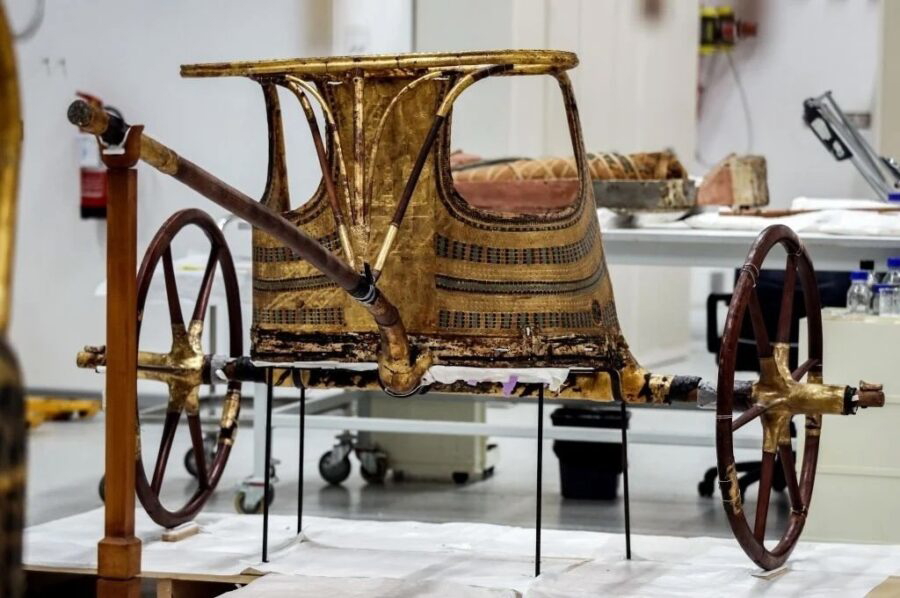
Six chariots excavated from King Tut’s tomb show how movement was engineered for display, sport, and war. Wheel hubs and spokes, axle placement, draught poles, yokes, and lashings register speed, control, and load. Gilding and paint residues mark parade builds, while plainer shells suggest training or hunting.
Additionally, conservators reconstructed approximately 1,500 gold flakes into leather harness panels, which feature Syrian plant motifs and an Aegean spiral—indicating a diplomatic influence on design choices.
Look for:
- Six Tutankhamun chariots with distinct wheels and lashings
- Reconstructed harness panels from 1,500 gold flakes with Syrian and Aegean motifs
- Composite bows and quivers with hundreds of arrows
- Shields and daggers of Tutankhamun as court and combat gear
- Throwing sticks and hunting equipment linking sport to kingship
Materials and Methods: Networks of Knowledge
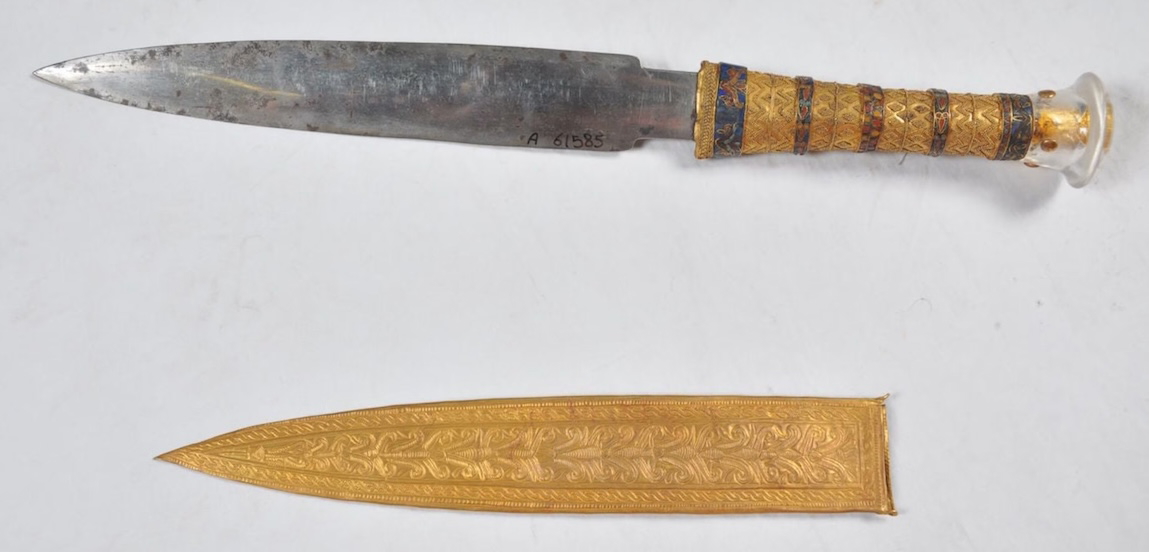
Various materials found in King Tut’s tomb connect the boy king’s brief reign to broader Bronze Age networks. Blue glass and faience trace high-temperature craft, cedar and ebony trace supply routes, resins and pigments widen scope beyond the Nile, and gold leaf signals skilled labor.
Methods of creation are also visible. Conservation of the King Tut trove has revealed grid lines, underdrawings, reinforced joins, as well as the meteoritic dagger’s nickel and cobalt signatures. Objects shed light on the decision-making and creative processes of ancient people.
Look for:
- Meteoritic iron dagger of Tutankhamun with high nickel and cobalt
- Libyan Desert Glass scarab pectoral highlighting exotic materials
- Blue glass and faience as evidence of high-temperature recipes
- Imported cedar and ebony for furniture and chests
- Pigments and resins that trace long-distance supply
- Visible tool marks, grid lines, and ancient repairs made legible through conservation
